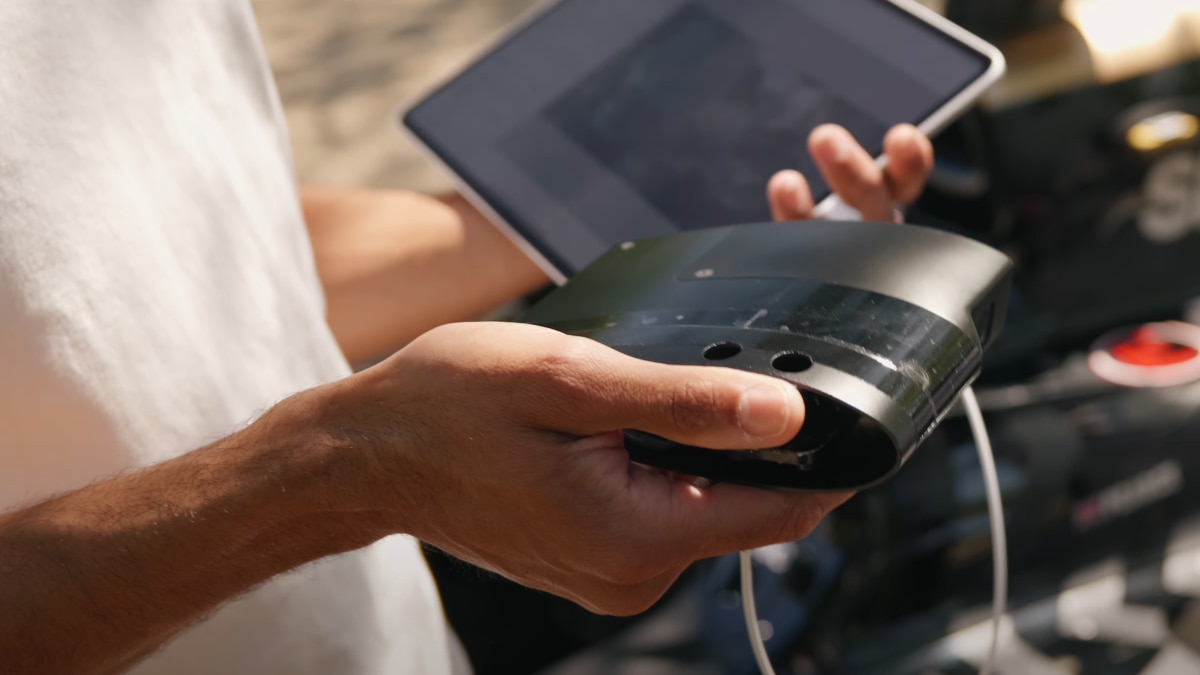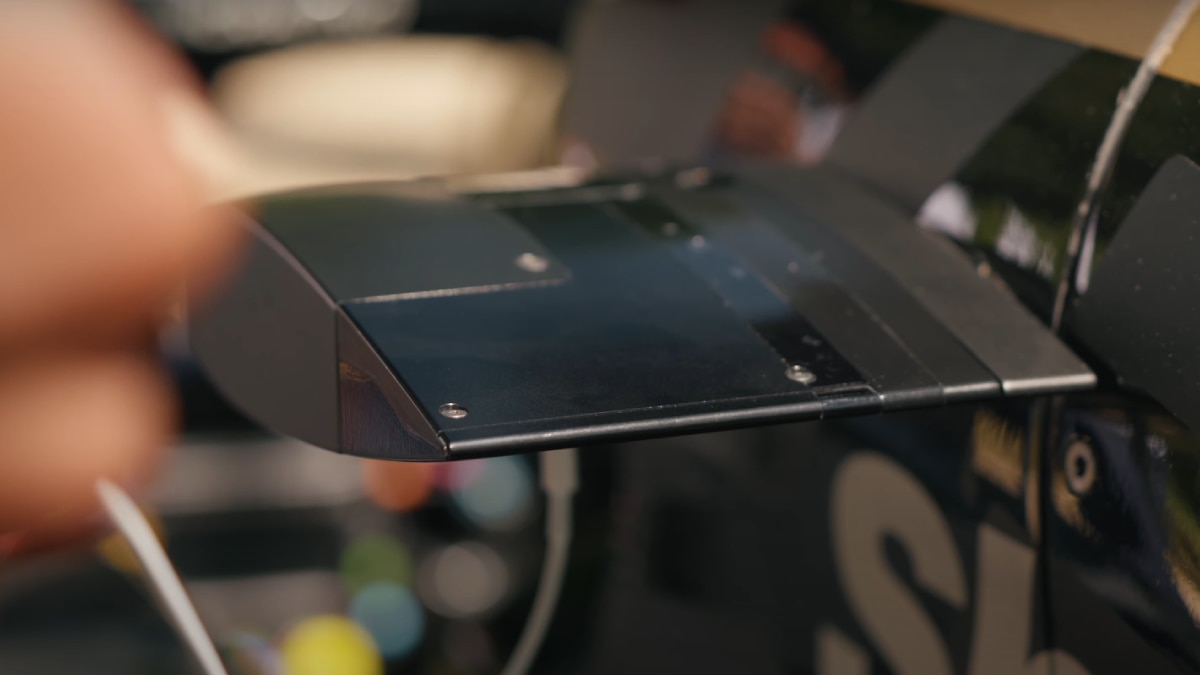Filming inside a Formula One cockpit is no easy task. Cinema cameras are bulky, GoPros just don’t cut it, and F1 cars leave no room for compromise. So when director Joseph Kosinski and cinematographer Claudio Miranda envisioned real POV shots for their upcoming Apple Original F1 film, Apple’s engineers stepped up — quite literally — with a custom-built solution powered by iPhone tech.
Unlike the standard broadcast cameras seen in televised races, which record in lower resolutions and fixed colour settings, the filmmakers needed cinematic-grade footage. But traditional rigs were out of the question. The solution? Replace the broadcast module with a purpose-built camera system using the iPhone’s internals — including its high-end sensor, Apple’s A-series chip, and even the iPhone battery — while maintaining the physical footprint and weight of the original F1 modules to avoid disrupting the car’s specs.
What’s Inside The Custom F1 Cam?
Though the exterior was crafted to mimic the original F1 broadcast cameras, the internals were anything but ordinary. At its core sat an iPhone image sensor, likely similar to the 48MP camera and A17 Pro chip found in the iPhone 15 Pro. To handle challenging lighting conditions at high speeds, Apple included a neutral density filter to manage exposure levels.
Engineered to withstand intense heat, shock, and vibration, the module went through rigorous testing — reportedly exceeding the durability standards laid out by Formula One itself. Footage was recorded in ProRes log format using custom iOS-based firmware. This allowed editors finer control during color grading and aligned the visuals seamlessly with the rest of the film.

Interestingly, this project also sparked innovations that trickled down into the consumer iPhone 15 Pro, such as log encoding and ACES (Academy Color Encoding System) support.
iPads, USB-C, & No Radios
Controlling the camera required another custom tool — a dedicated iPad app. Since the module had no radio connectivity, the iPad had to be connected via USB-C, enabling filmmakers to manually adjust frame rates, shutter angles, exposure gain, white balance, and hit record.

This is not Apple’s first lap in the filmmaking world. From Tangerine in 2015 to Danny Boyle’s 28 Years Later releasing this month, and now F1, the company continues to make inroads in high-end storytelling using its signature devices. But while smartphones are often touted as standalone filmmaking tools, the truth is more nuanced. Real sets bring pro lighting, third-party lenses, and stabilisation rigs that elevate these cameras far beyond casual use.
Will iPhones Now Take Over Films?
Filmmaking purists can rest easy — smartphone cinematography isn’t replacing traditional gear anytime soon. Take Christopher Nolan’s The Odyssey, reportedly the first blockbuster shot entirely on IMAX film. But innovations like Apple’s F1 camera prove that smartphone tech can hold its own in specialised, high-speed environments.
With Apple backing this project, the line between cutting-edge hardware and cinematic creativity continues to blur.